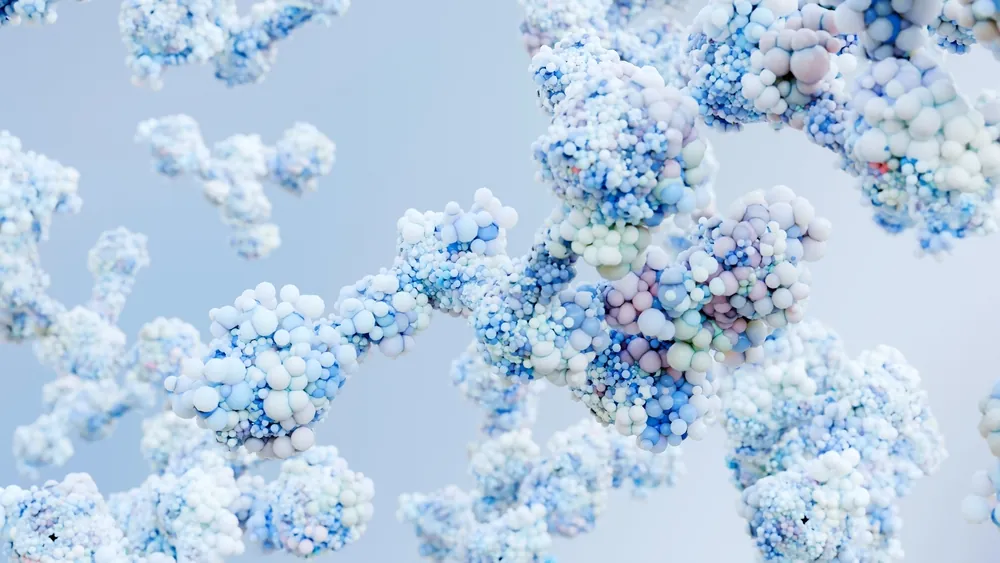A team of researchers publishing in Nature Communications has described nanobodies that can destroy the α-synuclein aggregates that characterize Lewy bodies, which are associated with dementia and Parkinson’s disease [1].
What are nanobodies?
Traditional antibody therapies, while promising in some studies, are too large to enter cells in order to affect the aggregates there [2]. This is a possible reason why antibodies against amyloid beta aggregates, which characterize Alzheimer’s disease, often show promise in early clinical trials but later fail the clinical trial process [3].
Therefore, the researchers turned to nanobodies, which are tiny, stable antibodies that can be deployed through adeno-associated viruses (AAVs) in order to act within cells [4]. Previous research had singled out NbSyn87, which targets all forms of α-synuclein, as a potential method of combating Lewy bodies and Parkinson’s disease [5].
However, as these resarchers note, NbSyn87 targets not only the aggregates of α-synuclein, it targets the protein itself, which serves valid physiological functions. Therefore, they began their search for a nanobody that targets just the fibril aggregates.
A successful hunt for a specific variant
The first part of the researchers’ quest involved a specific point of chemistry. Under oxidizing conditions, a common disulfide bond enhances the stability of nanobodies, but under the opposite (reducing) conditions commonly found in cells, it can be destructive [6]. Therefore, the researchers first used mutagens to develop a platform that was free of this bond.
Once that was done, they then began using genetically engineered yeast that produces α-synuclein aggregates as their nanobody target. Out of 28 clones, the researchers identified a single nanobody, PFFNB2, that preferentially binds to α-synuclein aggregates instead of its healthy monomer form.
This nanobody was found to work in live cells, including immortalized human cells and mouse brain cells, both from genetically modified and wild-type mice. Interestingly, it did not work in cells that had been subject to chemical fixation. It was extremely effective against the fibrils themselves in vitro.
Finally, in a mouse model that produces human α-synuclein rather than its murine form, and then had additional α-synuclein aggregates directly introduced into it, an AAV-administered form of PFFNB2 was shown to dramatically reduce the quantity of these α-synuclein fibrils.
Conclusion
This is a proof-of-concept study that certainly proves the concept. The researchers hold that their findings should be used in a preclinical mouse model of α-synuclein aggregation. If it is successful there, the next steps could possibly involve human clinical trials. If this approach is as effective in people as it is in cells, it could mean a substantial reduction in the frequency and severity of Lewy body dementia and Parkinson’s disease.
Literature
[1] Butler, Y. R., Liu, Y., Kumbhar, R., Zhao, P., Gadhave, K., Wang, N., … & Wang, W. (2022). α-Synuclein fibril-specific nanobody reduces prion-like α-synuclein spreading in mice. Nature Communications, 13(1), 1-13.
[2] Henderson, M. X., Covell, D. J., Chung, C. H. Y., Pitkin, R. M., Sandler, R. M., Decker, S. C., … & Luk, K. C. (2020). Characterization of novel conformation-selective α-synuclein antibodies as potential immunotherapeutic agents for Parkinson’s disease. Neurobiology of disease, 136, 104712.
[3] Mehta, D., Jackson, R., Paul, G., Shi, J., & Sabbagh, M. (2017). Why do trials for Alzheimer’s disease drugs keep failing? A discontinued drug perspective for 2010-2015. Expert opinion on investigational drugs, 26(6), 735-739.
[4] Zhang, C., Ötjengerdes, R. M., Roewe, J., Mejias, R., & Marschall, A. L. (2020). Applying antibodies inside cells: Principles and recent advances in neurobiology, virology and oncology. BioDrugs, 34(4), 435-462.
[5] Chatterjee, D., Bhatt, M., Butler, D., De Genst, E., Dobson, C. M., Messer, A., & Kordower, J. H. (2018). Proteasome-targeted nanobodies alleviate pathology and functional decline in an α-synuclein-based Parkinson’s disease model. npj Parkinson’s Disease, 4(1), 1-10.
[6] Kunz, P., Zinner, K., Mücke, N., Bartoschik, T., Muyldermans, S., & Hoheisel, J. D. (2018). The structural basis of nanobody unfolding reversibility and thermoresistance. Scientific reports, 8(1), 1-10.





